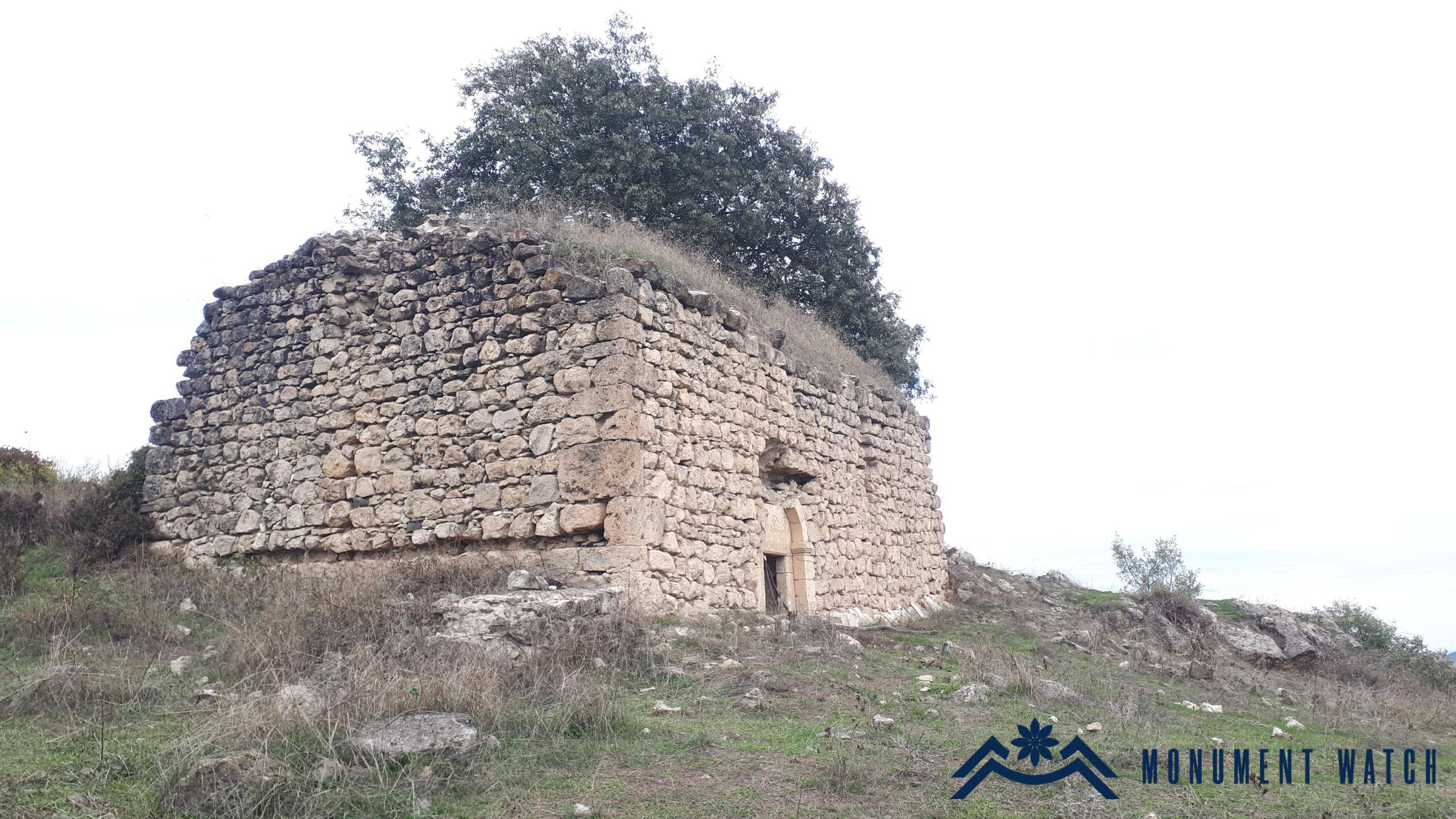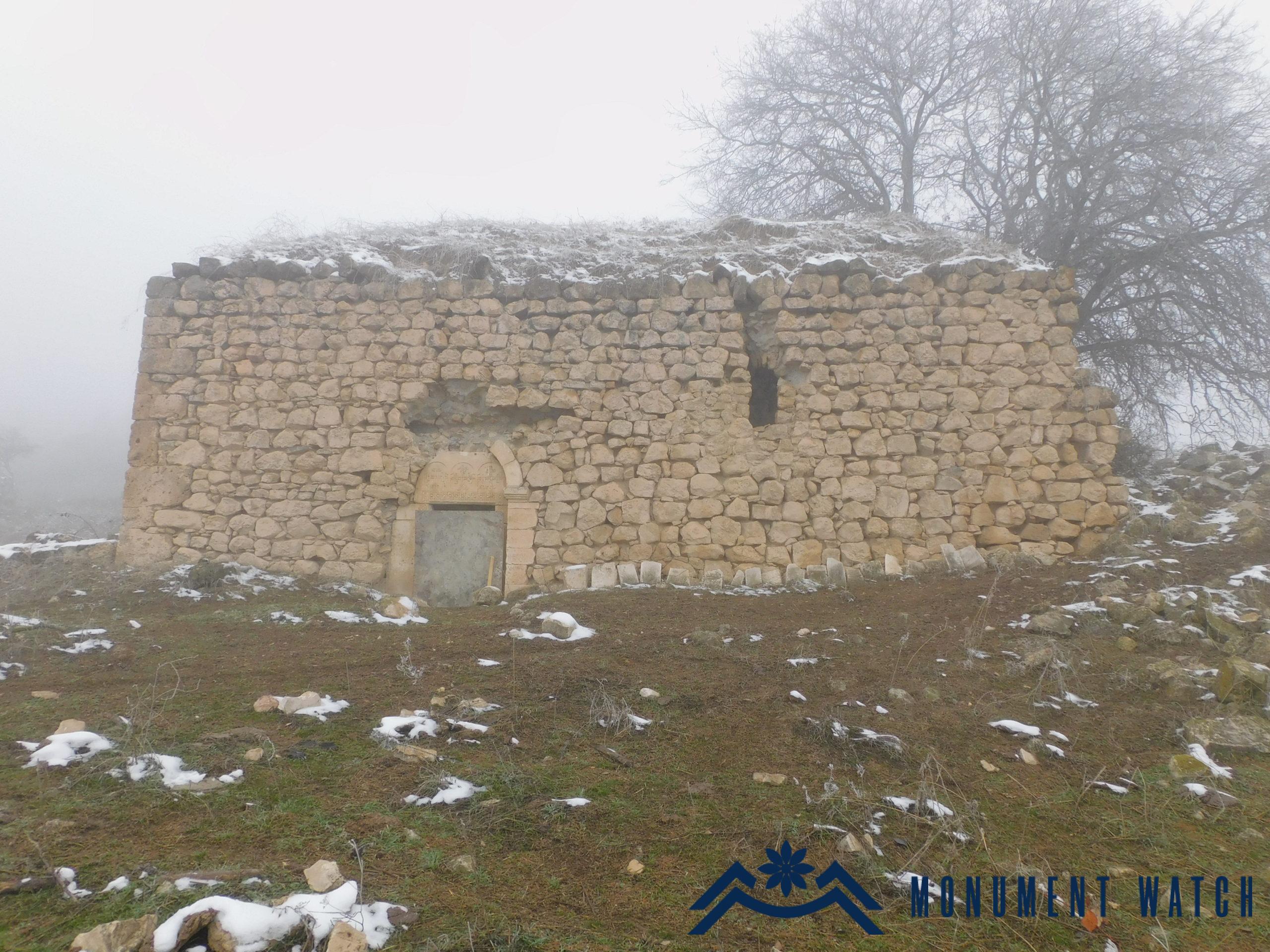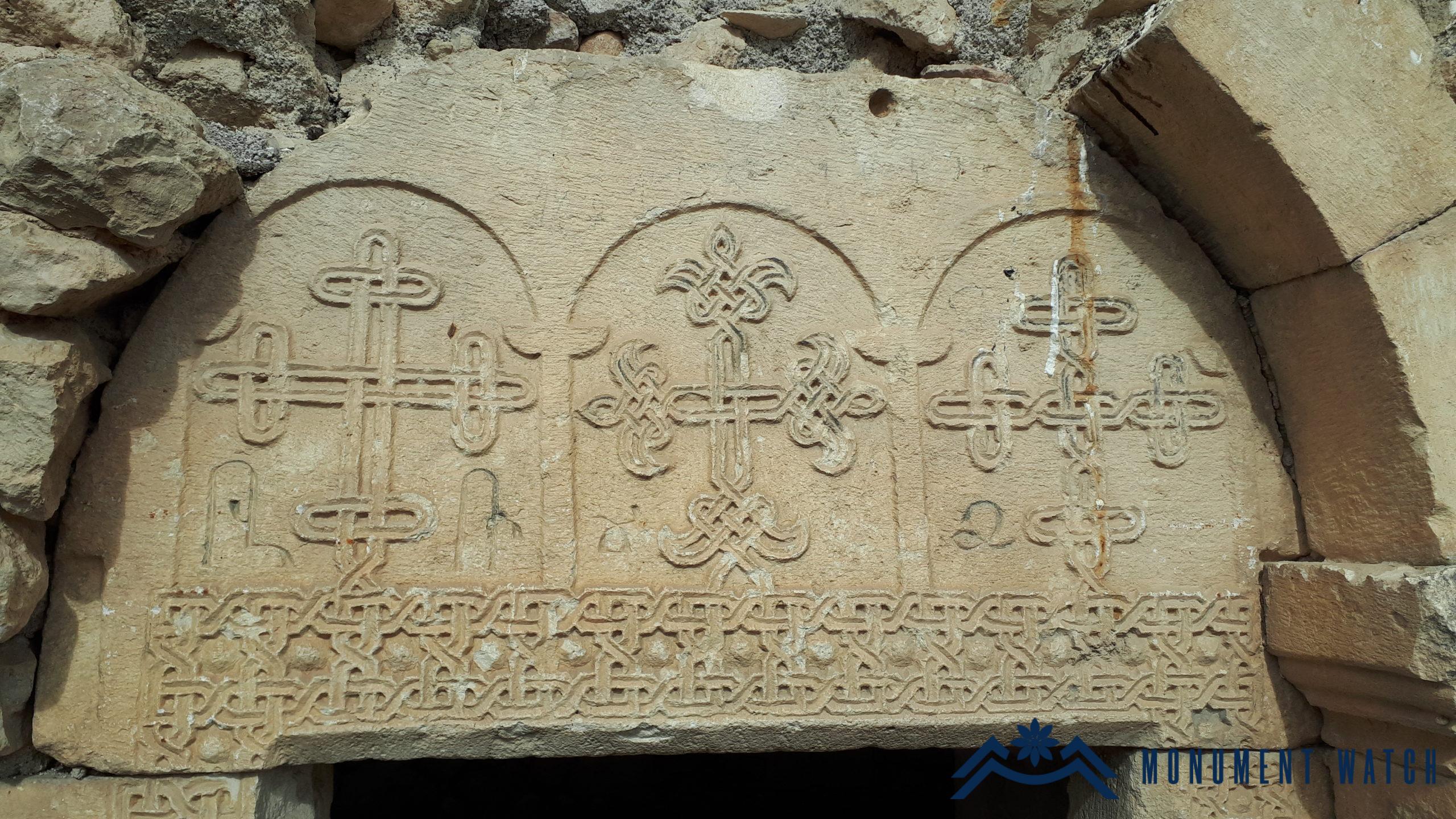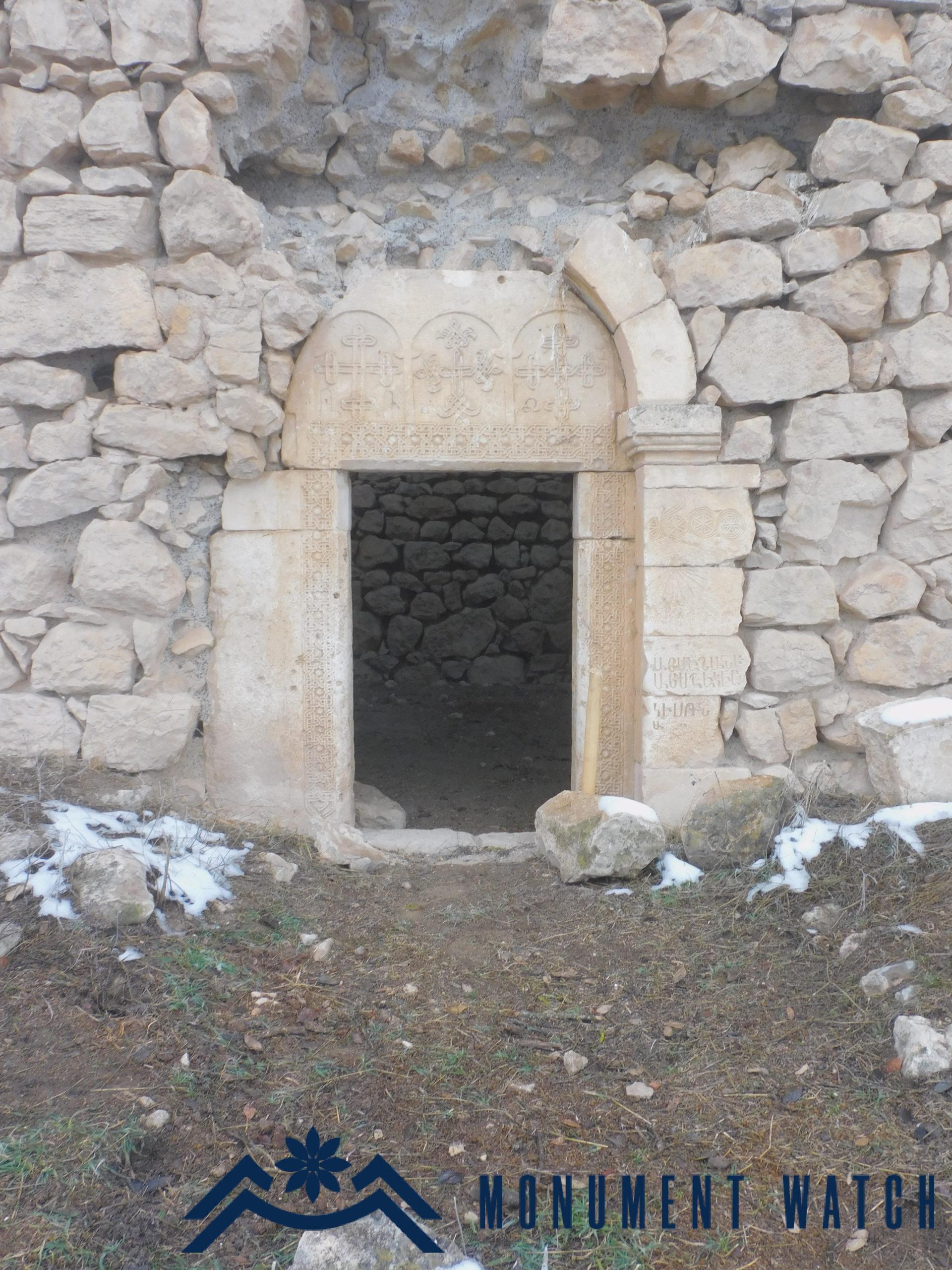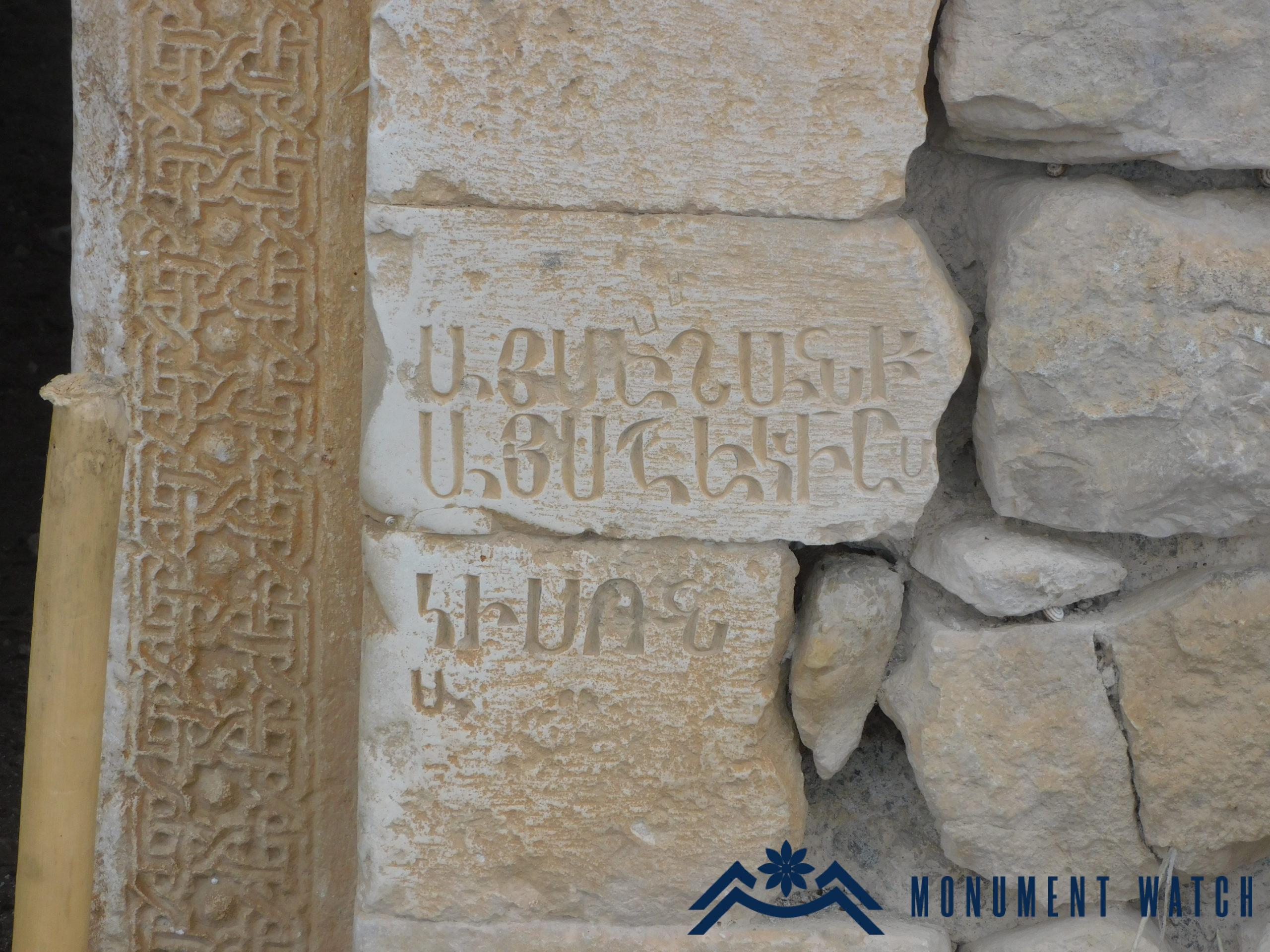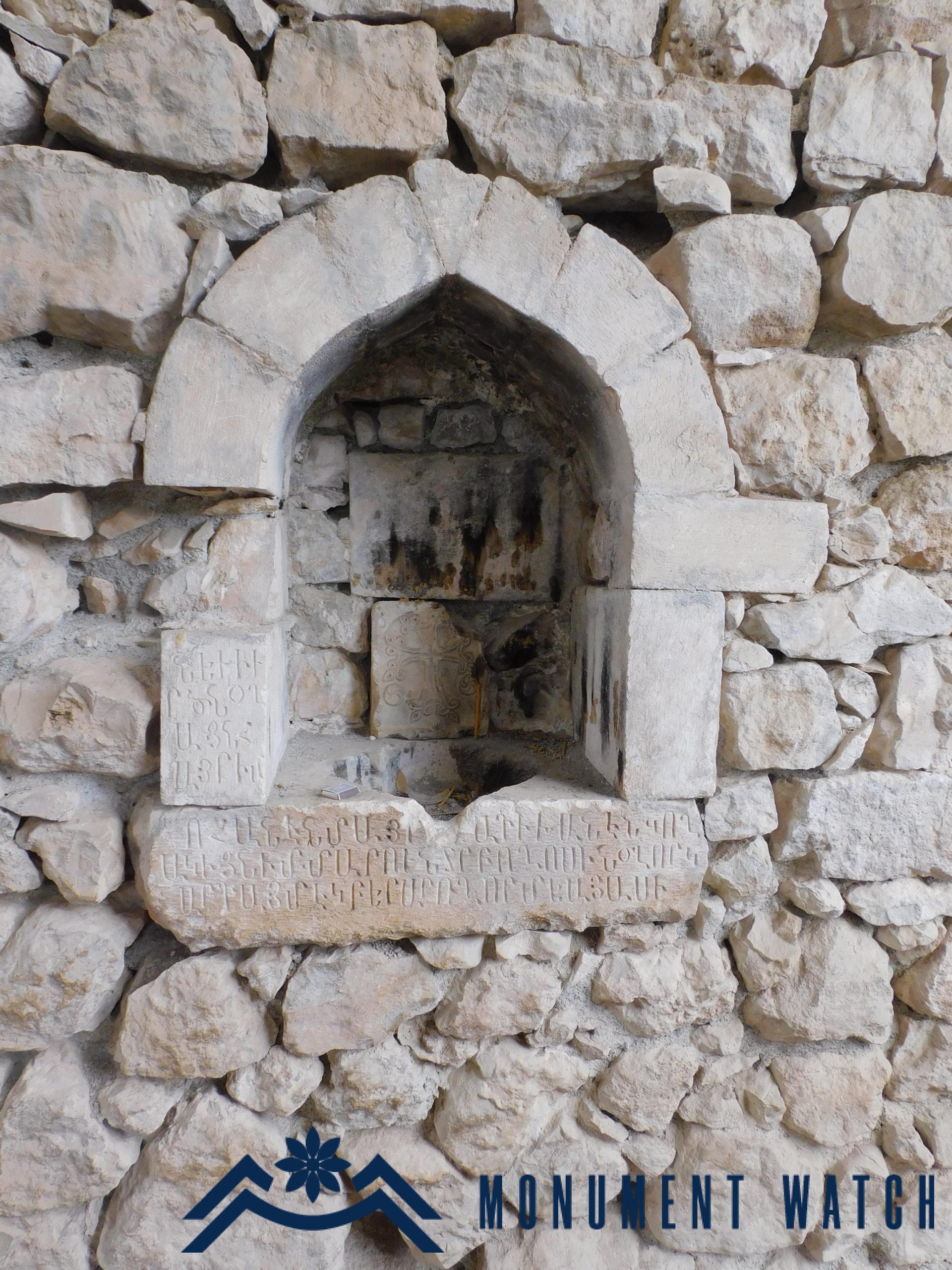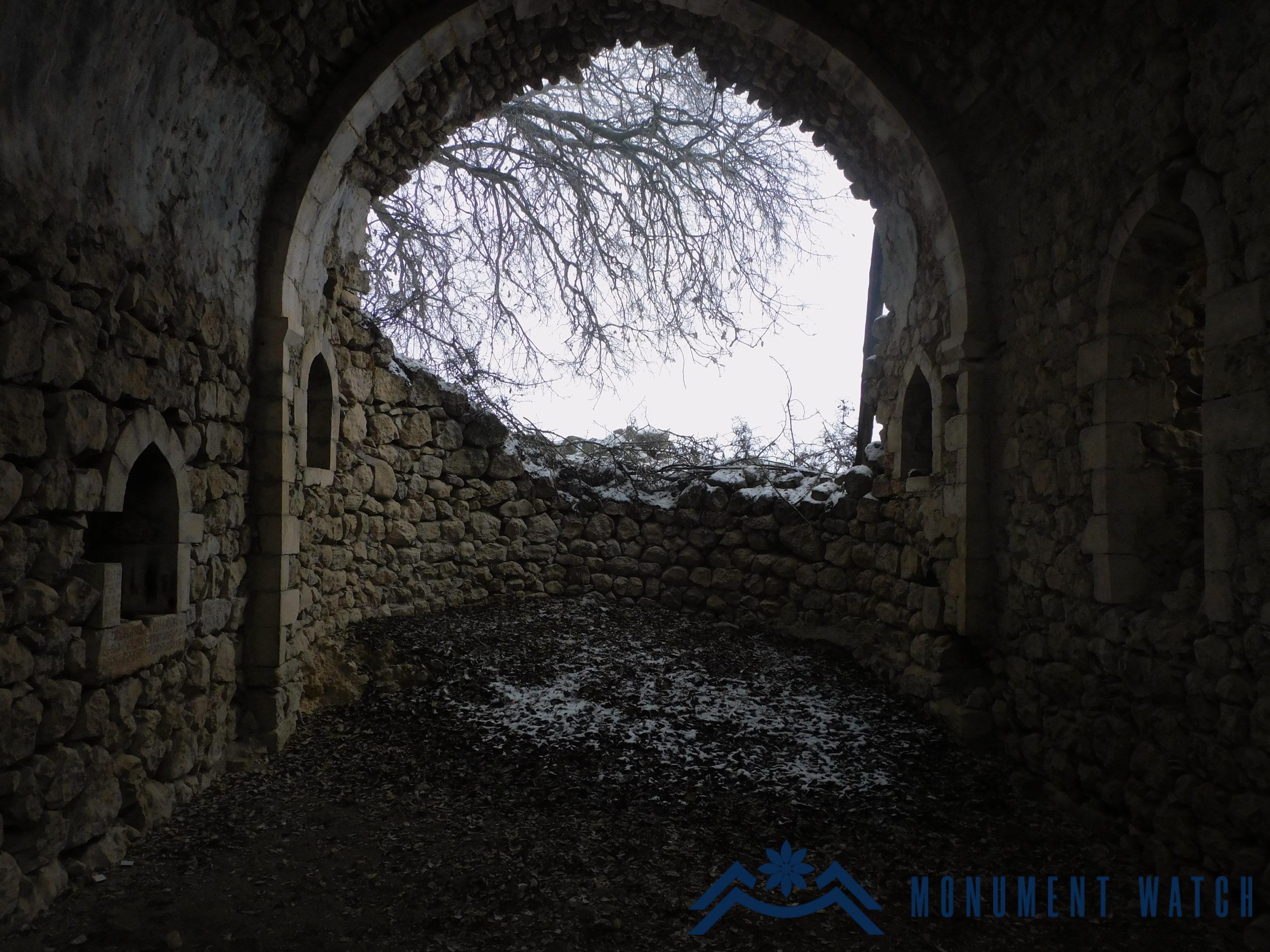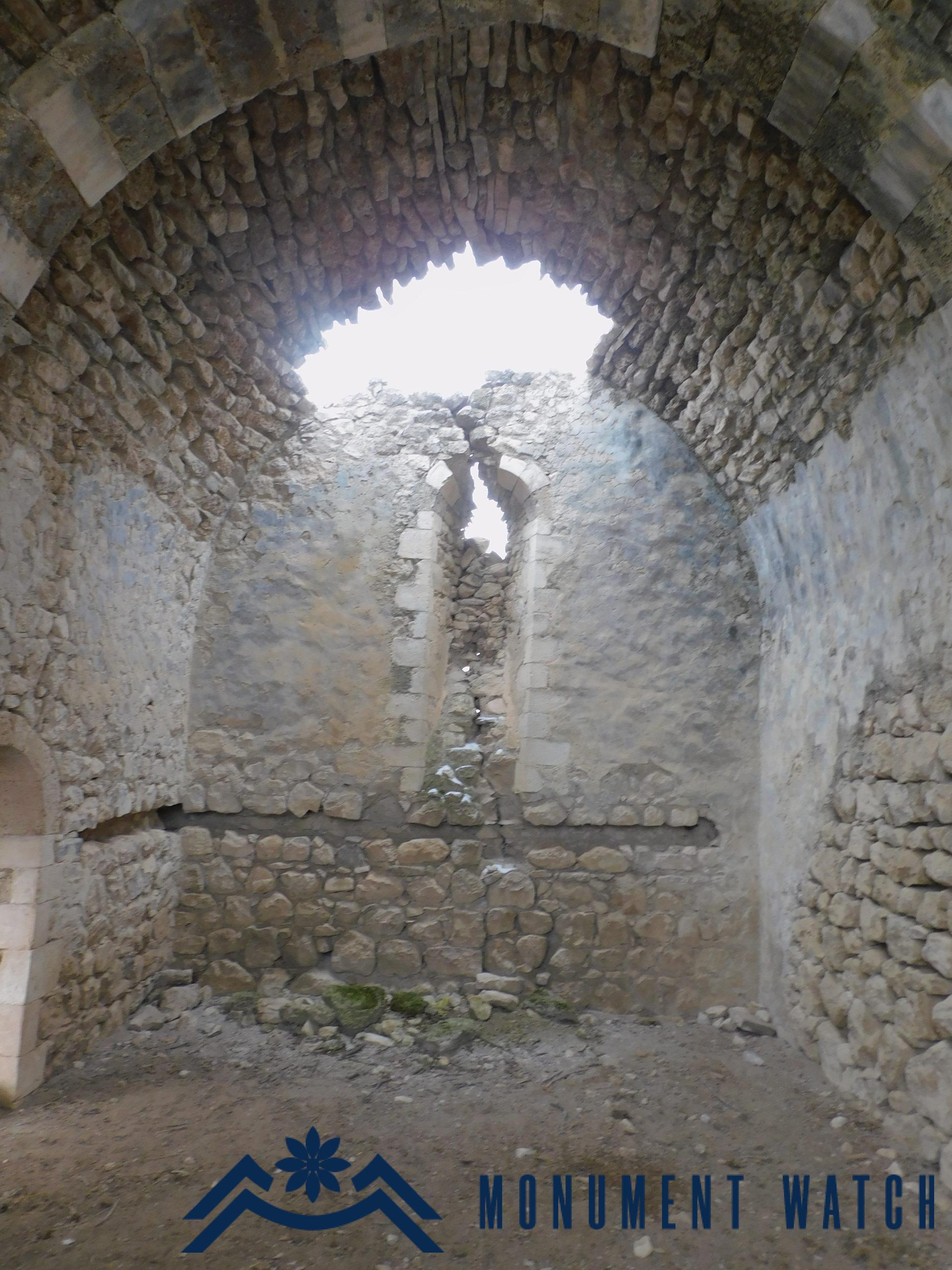The Surb Astvatsatsin Church of Old Skhtorashen
Location
The church is located on the grounds of the Martuni region's Old Skhtorashen rural settlement, east of the famous Platanus tree (Figs. 1, 2), in the zone of visibility and direct aiming of the Azerbaijani military.

Historical overview
The rural settlement of Old Skhtorashen is about 1-kilometer northwest of Karmir Shuka village. Makar Barkhudaryants claims that "...the residents of Skhtorashen are native to this land" (Barkhutareants 1895, 68). The church was built in 1731, according to the inscription on the lintel ("In the year of 1731", fig. 3).
Architectural-compositional examination
It is a rectangular single-nave hall with a semicircular tabernacle on the eastern side and two windows on the northern and southern walls. It is vaulted internally, with a gable roof externally. The vault rests on arrow-shaped arches rising from a pair of columns. The dimensions are 13.7 meters long, 7 meters wide, and 6 meters tall.
It is constructed of milky limestone, and the porch, outer corners of the hall, window parapets, niches, and baptismal font are all lined with large, polished stones. The western wall was reinforced internally and externally, along the width of the high altar, with a horizontal anti-seismic zone made of logs. Logs are no longer there.
The porch entrance faces south and has an architectural and sculptural design typical of the time: an external polished border, sculptured entrance curbstones, and a wide semicircular lintel (Fig. 4). The lower part of the lintel's horizontal sculptured zone continues and wraps up the decoration of the entrance curbs, highlighting its solemnity. The rest of the surface is taken up by lettered crosses embedded in the three arches, at the bottom of which the church's construction date is engraved in large regular majuscule writing (Fig. 3).
The large upper curb on the right side of the entrance is decorated with four woven rosettes, the next slab attempts to depict a sundial, and the following two slabs have unfinished inscriptions that do not form a complete text (Fig. 5). The sculptures and inscriptions on the right side of the entrance were most likely added later.
The windows on the east and south sides provide lighting to the structure.
Another inscription later appended, and irregular can be found inside the church, in the lower part of the arch of the north wall. The names "Karapet... Harutyun/ Ter Poghosian" can be read here (Fig. 6).
The baptismal font has been maintained on the northern wall, in the depth of which a khachkar from the 15th-16th centuries is enchased, and a part of the inscription is visible on the left side of the polished platband and the lower curbstones. The first slab of the inscription is now missing, so the name of its builder remains a mystery “..... And my parents: father Ohan, mother Adikhan, wife Maru, Ter Poghos, you who read may God have mercy on you" (Fig. 7).
The old cemetery surrounds the church, and the spring is not far from the Platanus tree.
The condition before, during, and after the war
The church's vault has partially collapsed (Figs. 8, 9). It was unaffected by the military operations of 2020.
Bibliography
- Barkhutareants 1895 - Barkhutareants M., Artsakh, Baku.
The Surb Astvatsatsin Church of Old Skhtorashen
Artsakh
